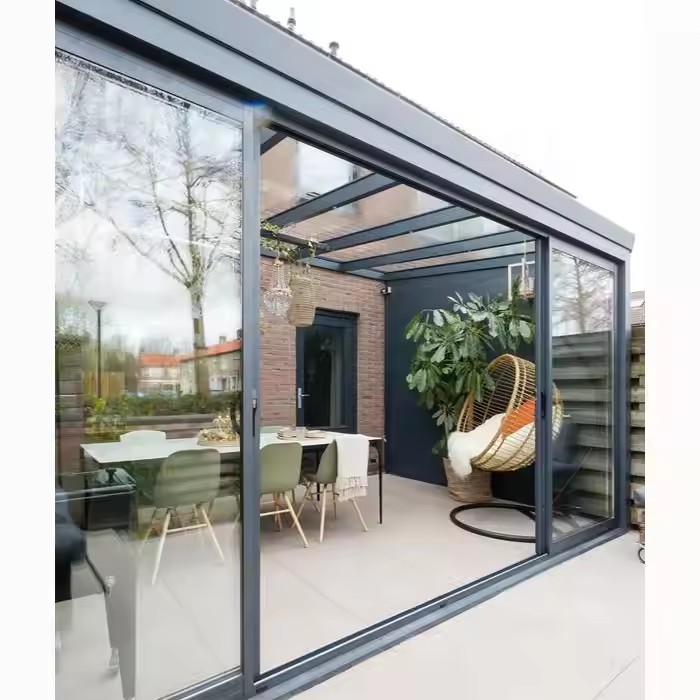I. Market Research
Selection of Target Markets
Analyze the demands of the construction markets in different countries and regions. For example, European and American countries have a greater demand for energy-efficient and high-end customized doors and windows. While in some developing countries, they may focus more on doors and windows products with high cost performance. You can refer to the construction industry reports and real estate market trends of various countries to identify potential markets. Analyze the market situation of specific countries where you will sell products, and work out sales methods suitable for the national conditions of these specific countries according to their sales channels. For instance, if online sales are well-developed in some countries, then use the media to sell doors and windows products.
Consider the local climate conditions. For example, in tropical areas, there are higher requirements for the heat insulation and ventilation performance of doors and windows; while in cold areas, the thermal insulation performance is a key factor. In different regions, conduct sales according to the weather and specific geographical conditions, and target consumers’ pain points for sales, so that you can solve consumers’ problems and gain more profit margins.

Research the local architectural styles and cultural preferences. For example, in areas with European architectural styles, aluminum alloy doors and windows with classical lines and decorative features may be more popular; while in places where the modern minimalist style prevails, simple and elegant designs will be more favored. Research the cultural backgrounds of the countries where you will sell products, and combine the cultural connotations that consumers like with the sales of doors and windows, so that you can sell doors and windows as much as possible.
Understanding of Regulations and Standards
Be familiar with the building regulations, product quality standards and safety requirements of the target markets. For example, European Union countries have strict standards for the energy efficiency and harmful substance content of doors and windows. The CE certification mark is a mandatory certification for products to enter the EU market. The United States has ASTM (American Society for Testing and Materials) standards that stipulate various performance indicators of doors and windows.
Understand relevant policies such as import tariffs, trade barriers and certification procedures. These will affect the cost of products and the difficulty of entering the market.

II. Product Optimization
Adjustment of Product Adaptability
Adjust the design of aluminum alloy doors and windows according to the demands of the target markets. For example, in coastal areas with high humidity, strengthen the anti-corrosion performance of doors and windows; in earthquake-prone areas, design the structure of doors and windows with better seismic performance.
Consider the local installation habits and the reserved sizes of buildings, and provide appropriate sizes of doors and windows. For example, in some European countries, the sizes of building openings may be different from those in China, so it is necessary to customize doors and windows of corresponding sizes.
Quality Improvement
Ensure that the product quality meets or exceeds the standards of the target markets. This includes aspects such as the quality of aluminum alloy materials, the durability of hardware fittings and the performance of glass. For example, using high-quality heat-insulating glass can improve the energy-saving effect of doors and windows.
Establish a strict quality control system. Strictly check every link from raw material procurement to production processing and then to finished product inspection, so as to reduce product quality problems and after-sales disputes.

III. Brand Building
Brand Positioning
Determine the positioning of the brand in the overseas market. It can be a high-end customized brand, emphasizing exquisite craftsmanship and personalized design; or it can be a cost-effective brand, highlighting price advantages and reliable quality. For example, some German door and window brands are renowned for their high-end quality and advanced technology in the global market, while some Chinese brands attract overseas customers with high cost performance.
Brand Promotion
Establish a multilingual official brand website to display information such as product series, technical advantages and success cases. The website should conform to the browsing habits of overseas users and pay attention to search engine optimization (SEO) to facilitate potential customers to search for it online.
Use international social media platforms (such as Facebook, Instagram, LinkedIn, etc.) for brand promotion. Share product pictures, installation videos, customer reviews and other content to attract the attention and interaction of overseas users.

IV. Expansion of Sales Channels
Finding Overseas Agents and Distributors
Find powerful overseas agents and distributors through channels such as industry associations, trade websites and exhibitions. These partners are familiar with the local market and have their own sales networks and customer resources. For example, cooperating with local building materials distributors in Europe can quickly promote products to local construction companies, decoration companies and retailers.
Strictly screen and evaluate agents and distributors. Examine their market experience, sales ability, after-sales service ability and other aspects. At the same time, establish a good cooperative relationship and provide necessary support, such as product training and market promotion support.
Carrying out Cross-border E-commerce Business
Choose appropriate cross-border e-commerce platforms, such as Amazon International Station, Alibaba International Station, etc. Open stores on these platforms, upload product information, including detailed product descriptions, pictures, videos, etc. Utilize the traffic advantages and marketing tools of the platforms to attract overseas customers to place orders and make purchases.
Optimize the operation of cross-border e-commerce stores. This includes providing good customer service, promptly replying to customer inquiries and handling orders; ensuring that the logistics and distribution of products are timely and accurate, and establishing long-term cooperative relationships with international logistics partners to reduce logistics costs.

